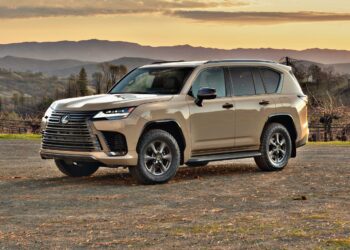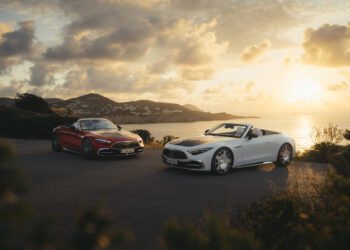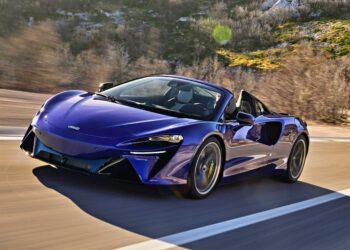Ever since Singer opened the floodgates, it’s as if six and seven-figure Porsche restomods have become as common as Corollas. Throw a stone during Monterey Car Week, and you’ll hit a half-dozen builders claiming to offer a unique take on what’s ultimately the same concept: take an old Porsche 911, restore it, partially modernize it with new components, and maybe throw in a spicy motor to top it all off.
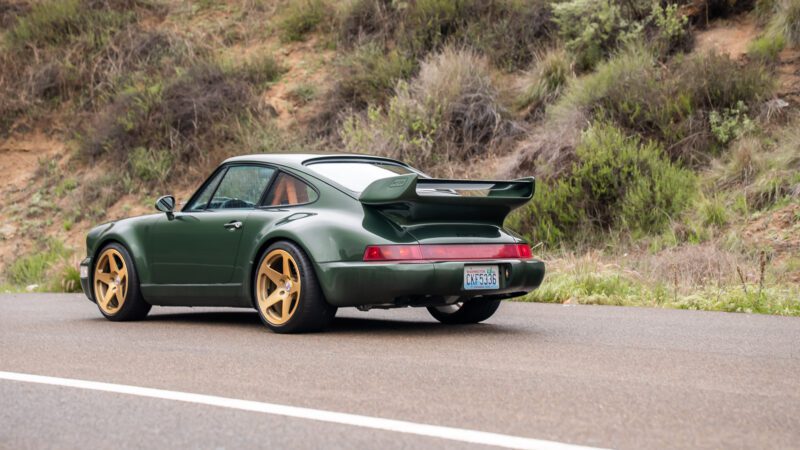
The car I’ve come to Costa Mesa, CA to drive is indeed yet another Porsche restomod, but this one has a twist. Built by Britain-based Everrati, this is an air-cooled 911 sans the aircooled bit. This car’s naturally aspirated flat-six goes out, and in goes a battery pack, a single-speed transmission, and an electric motor. How’s that for unique?
The more pressing question, however, isn’t: can Everrati successfully electrify a classic 911, but whether or not it should have in the first place.
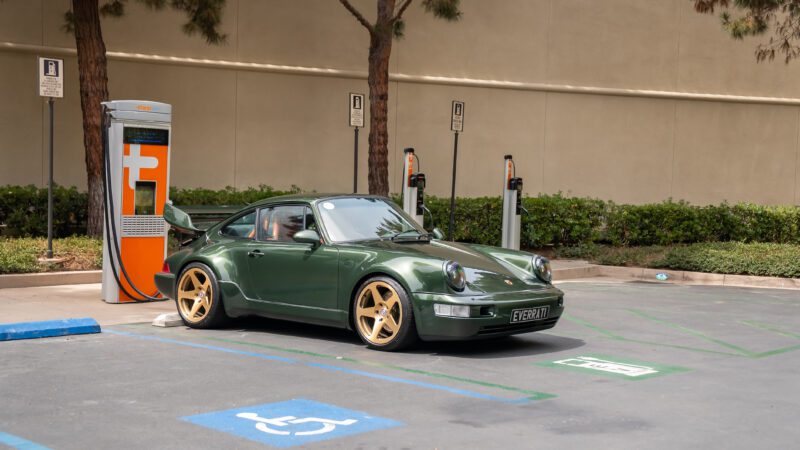
I’m somewhat skeptical as I walk up to the Oak Green Metallic 964-generation 911 with a charging cable snaking out from beneath its rear decklid. Soon, we’ll tackle some morning traffic and a winding mountain road. Everrati Founder and CEO Justin Lunny is riding passenger today. We disconnect the charger, settle into this car’s leather-wrapped Recaro Pole Position bucket seats, and set off.
My skepticism stems from my own closeness to air-cooled 911s. They’ve been in my family since I was born, and when I turned 16, I learned to drive stickshift in the very car I still own. It also serves a practical purpose, acting as a palette cleanser between drives in new vehicles. It’s a constant reminder of what talkative inputs and an actual sports car should feel like.
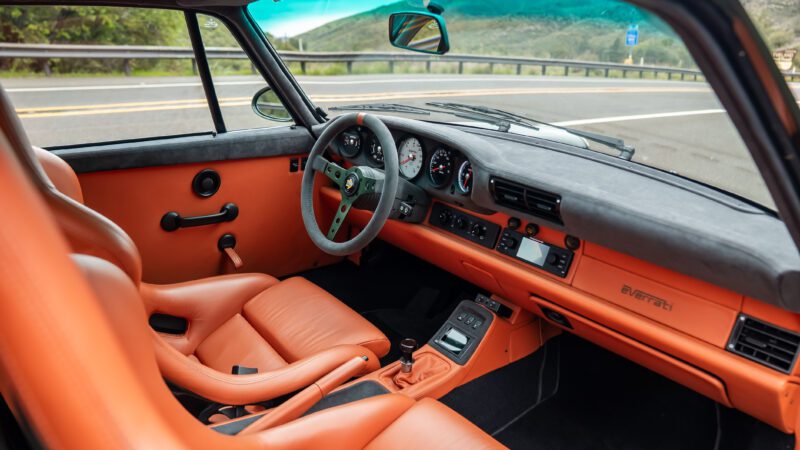
As I work through thinning morning traffic, the driving experience is foreign yet familiar. From behind the wheel, there are few visuals to indicate that this is anything other than an old 911. The interior is tastefully leather and suede-wrapped, incorporating a smaller Momo Prototipo steering wheel and roll bar.
To the left of the wheel, its state of charge indicator slots exactly where the fuel level indicator would be while the battery temperature gauge replaces the engine oil temp readout. On the right, you’ll find a conventional two-handed clock and an analog speedometer accented by a small display indicating your state of charge.
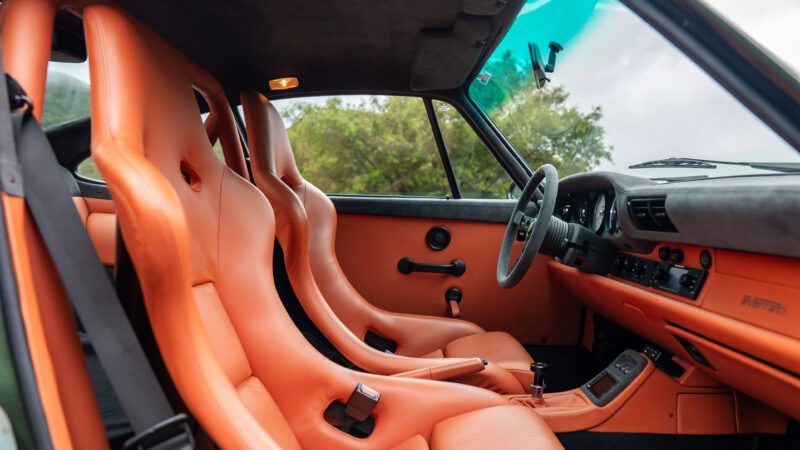
If anything, the only gauge that strikes me as entirely different is the central tachometer, now replaced by an output indicator measured in kilowatts. A new AC system blows cold air like you’d expect from a modern car, while Porsche’s Classic Radio allows for direct smartphone integration. A subtle Everrati touchscreen enables you to make quick drive mode and suspension changes.
The elephant in the room sits right between the twin bucket seats: this car’s automatic gear selector. However, as Lunny points out a few miles in, Everrati only purchases donor cars fitted with Porsche’s less-than-stellar Triptronic automatic transmission, presumably because these less desirable cars are cheaper, but also because it means there’s no need to cannibalize a manual 964.
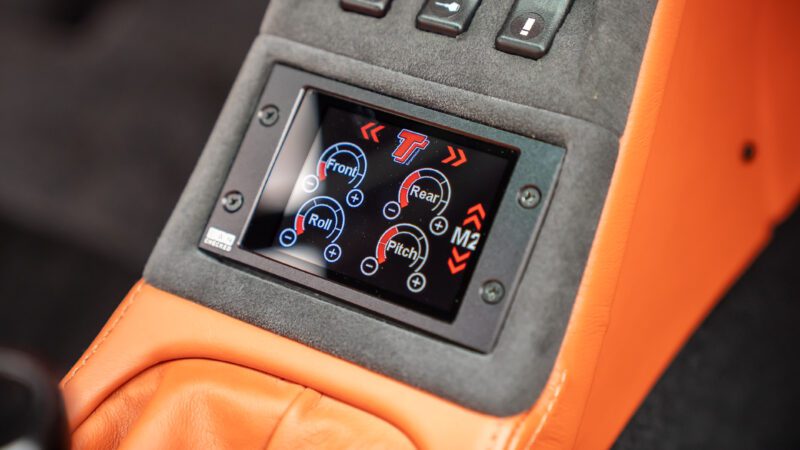
As I ask more questions about Everrati’s process, I realize cannibalize is the wrong word, as Lunny chimes in, stating that all of Everrati’s modifications are fully reversible. Of course, why you’d spend the time and money to convert your now $450,000 electric Porsche back into an internal combustion original that would be worth a quarter of that figure is another question entirely.
This particular Oak Green Metallic car, aptly named the Evergreen Commission, is owned by DirtFish Rally School Founder Steve Rimmer. This should give you some insight into why this car is built as an RSR tribute on the outside with all the matching sporty hardware on the inside.
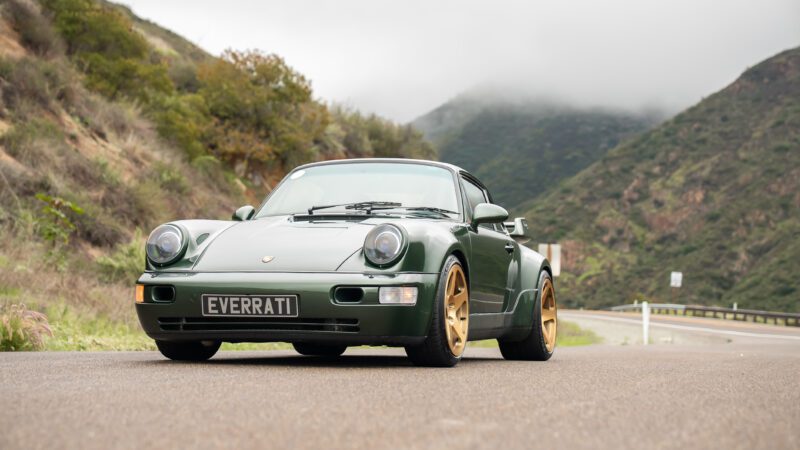
When I ask Lunny who this car is for, his answer is surprising. Lunny tells me that out of the 11 total Porsche commissions Everrati has built, most customers have never owned an air-cooled 911. They want the vintage Porsche aesthetic without the challenges of driving around in a car powered by an over-30-year-old engine whose basic design dates back to the early 60s. I’d throw in the costs of maintaining an air-cooled Porsche, but we’re talking about an over $450,000 restomod here, so they’re hardly relevant.
Regardless, this insight helps put into perspective what I’m feeling behind the wheel. As you might expect from a car with an electric powertrain, it’s far quieter, even if more wind and road noise permeates the cabin. Its power delivery is effortlessly smooth, and developing 500 horsepower and 369 pound-feet of torque, it’s far more potent than stock. With no gears to shift through, the experience is quite zen. It’s the kind of car you could easily get into every day and drive around without much effort. That is, as long as you don’t mind nestling into a Recaro Pole Position.
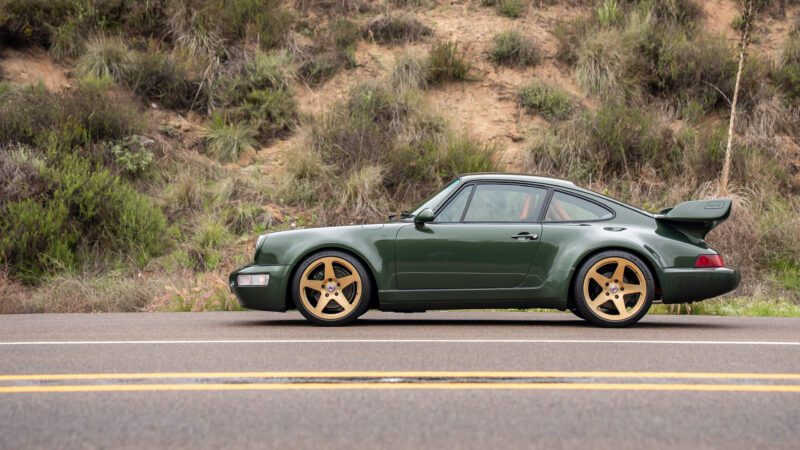
This car sports electronically adjustable coilover suspension by TracTive, a set of five-spoke HRE Wheels finished in a gaudy gold color, and Michelin Pilot Sport 4 S rubber. The resulting ride is quite firm, making it less daily drivable. However, it’s worth mentioning that these were the components Everrati installed on this particular build. According to Lunny, this car weighs about 40 fewer pounds than a 964 Turbo. Tipping the scales at around 3,200 lb, a slightly softer setup could be an option.
Everrati achieves these weight savings by implementing carbon fiber body panels such as this car’s roof, fenders, and rear wing. By splitting its 62-kilowatt-hour battery pack into two units, this electrified 911 retains a rear-biased weight distribution of 40/60. However, you lose considerable front storage space. Everrati claims it’ll travel around 200 miles and charge from 20 to 80 percent in 40 minutes when connected to a 70-kilowatt fast charger.
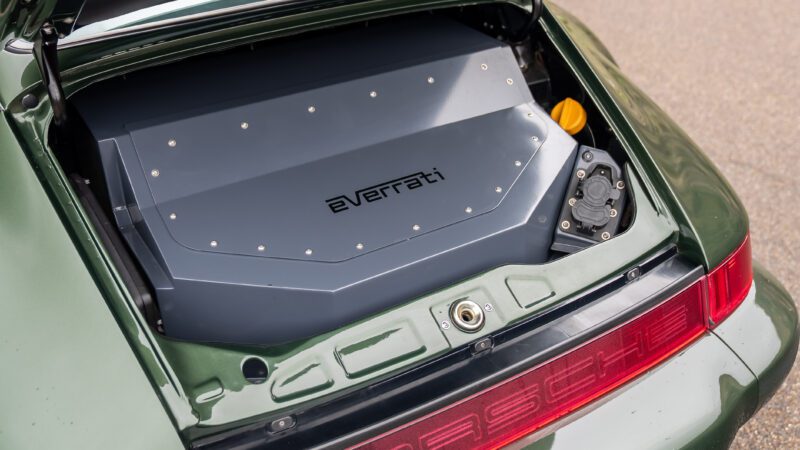
Now on the winding mountain road, the benefits of this car’s extra power, firm suspension, and larger tires come into play. A blip of the accelerator results in an instant burst of acceleration from the rear-mounted electric motor. It puts the power down through a limited-slip differential, allowing this rear-drive EV to hit 60 mph in 3.7 seconds.
Despite its impressive straight-line acceleration, its weight distribution means you still have to drive it like a rear-engined Porsche. Brake hard in a straight line, turn in, and back on the accelerator to settle the rear. Because the front battery pack lives roughly where this car’s gas tank would be, this EV does an admirable job of preserving the stock car’s light front-end feel. However, its upgraded suspension means it corners far flatter than a standard 964, which can often feel floaty with its factory suspension.
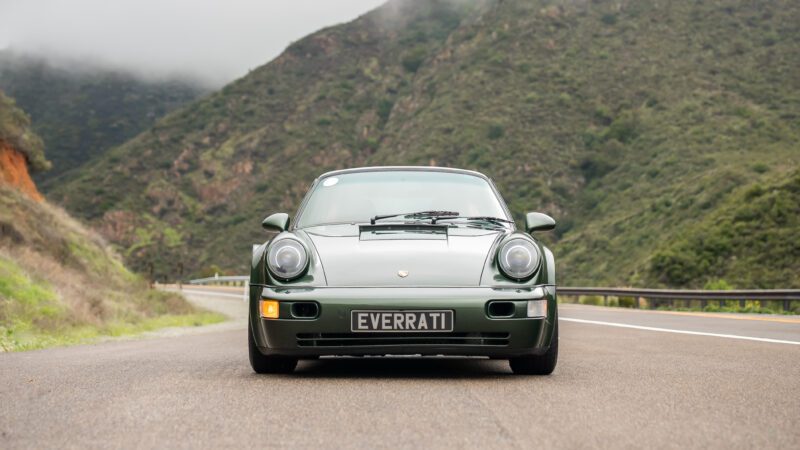
This car inherits its brakes from the 964 Turbo. However, Everrati incorporates its regenerative braking system that works in concert with them, limiting how much you have to lean on that left pedal. The integration of the new and old systems is nicely dialed in. And because the cabin is essentially unchanged, you still have excellent visibility and the feeling that you’re driving something small.
If you’re wondering why I’ve not mentioned this car’s steering, it’s no accident. Everrati integrates its own power steering system, with Lunny letting me know that his company tunes it to mimick the stock car’s setup. On the tighter turns, it certainly does an admirable job. It picks up weight nicely, and it’s still plenty talkative.
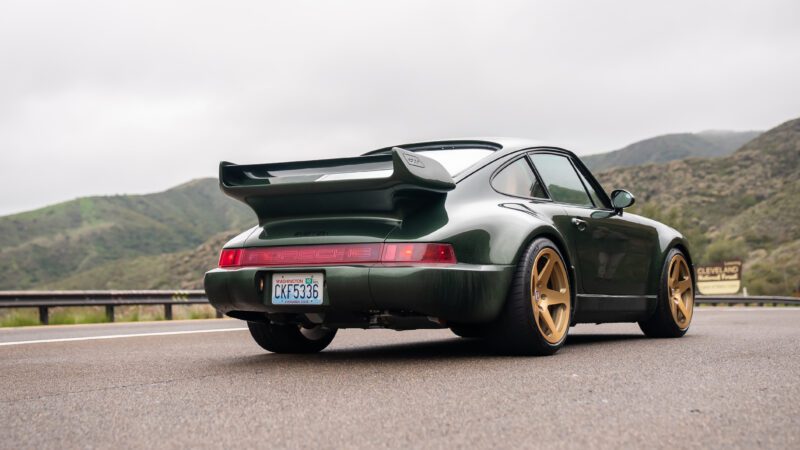
However, you can sense that it’s artificially weighted at slow speeds. During maneuvers, the steering’s effort curve is largely inconsistent, with the system randomly oscillating between being heavy and light despite no real change in speed.
After a few hours on the road, the answer to my first question is clear. Everrati pairs a very effective electric conversion system with excellent restoration work. From the exterior finish to its re-trimmed interior, this Porsche 911 looks and feels like a high-quality item. And given the seamless integration of its electric motor and battery pack, it’s an excellent tool for daily driving and canyon carving for someone who wants the air-cooled look without noise or emissions.

However, unlike other vehicles Everrati converts, such as the Mercedes-Benz “Pagoda” SL and the Land Rover Series IIA, this 911’s appeal shrinks if you’ve already experienced its internal combustion counterpart. Unlike the Benz and Rover, two machines with much to gain from a more reliable and refined powertrain, this car’s unique engine configuration is central to its appeal. This $450,000 restomod isn’t just unlike the others. It’s for an entirely different kind of enthusiast.


